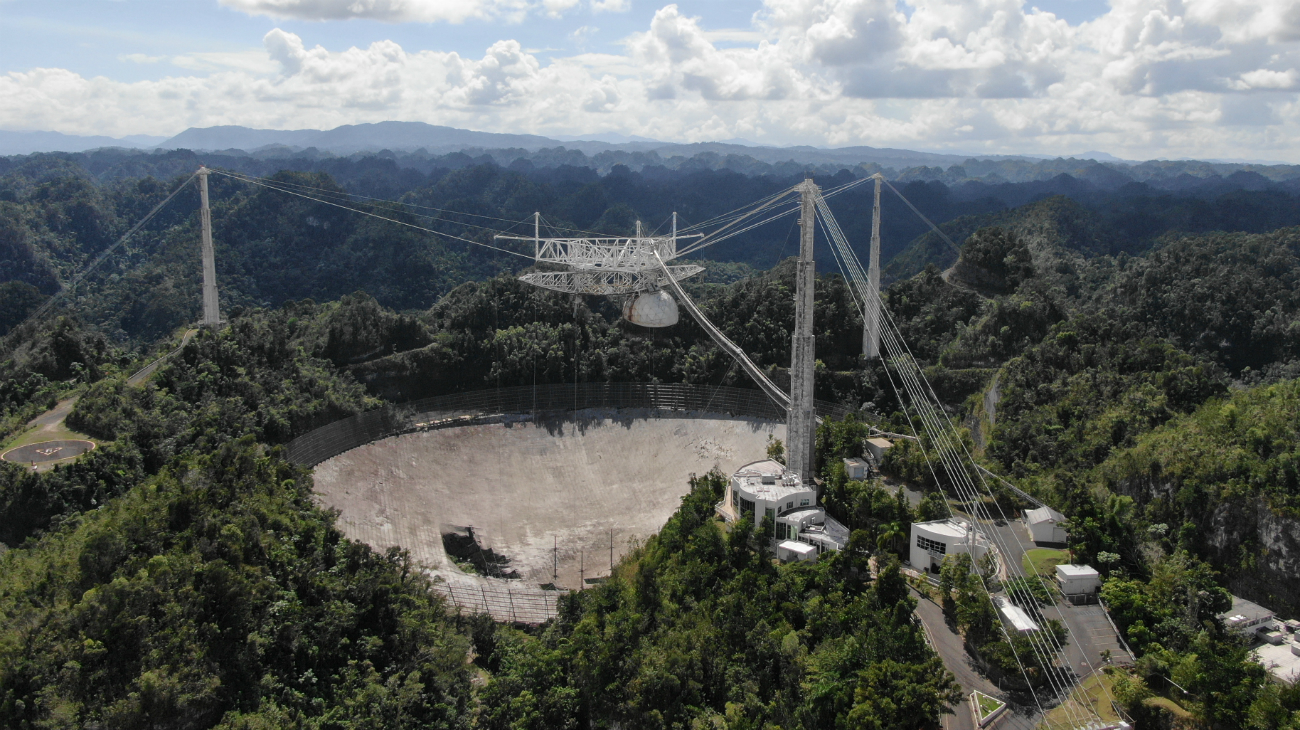‘Too unstable ‘, is the opinion of technicians who mapped out the damage to the observatory after breaking one of the support cables again.
It’s the end of the story for the Arecibo Radio Telescope in Arecibo, Puerto Rico, one of the most famous and largest radio telescopes in the world. Less than 3 months after one of the cables jumped and a gaping hole punched in the underlying panels, another one snapped early this month. That caused a new hole and more damaged cables.
Safety in the observatory can no longer be guaranteed, is the sad verdict. And so, after 57 years of loyal service, the activities of the observatory are finally put to an end.
Also read: Hitch: gaping hole in Arecibo radio telescope
Hitch
The Arecibo radio telescope, in the jungle along the north coast of Puerto Rico, is one of the largest radio telescopes in the world with a dish measuring 305 meters in diameter. The very heavy surface consists of more than 38,000 aluminum panels that rest on a tangle of cables.
It was hit in August. Then one of the support cables broke, smashing several panels. After the incident, the observatory immediately closed its doors, allowing technicians to identify damage and repairs needed.
Too unstable
Last November 6, a second cable appears to have been snapped. That incident now officially kills the observatory. After inspection of the damage, the American NSF (National Science Foundation) concluded that the observatory is too unstable and the damage is such that working there is too dangerous. The NSF has announced that it will initiate controlled decommissioning of the gigantic installation.
The radio telescope, which scientists from all over the world used, has a hectic past. For example, before August, Hurricane Maria in 2017, a series of earthquakes in January and devastating Tropical Storm Isaias in July already caused a lot of damage.
Sources: National Science Foundation (NSF), The Guardian
Beeld: Arecibo Observatory, University of Central Florida
–


